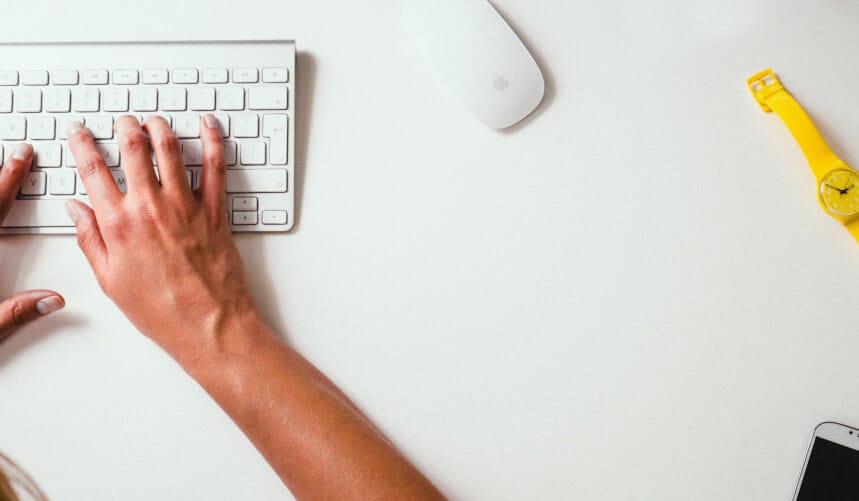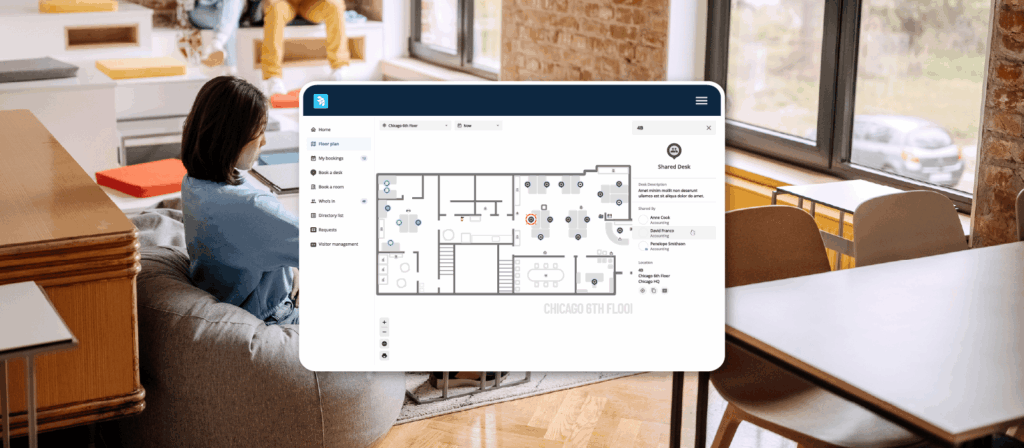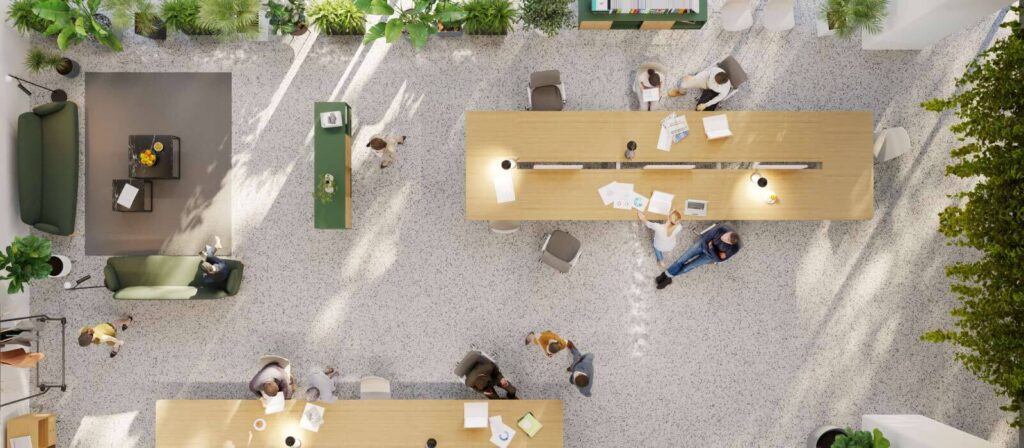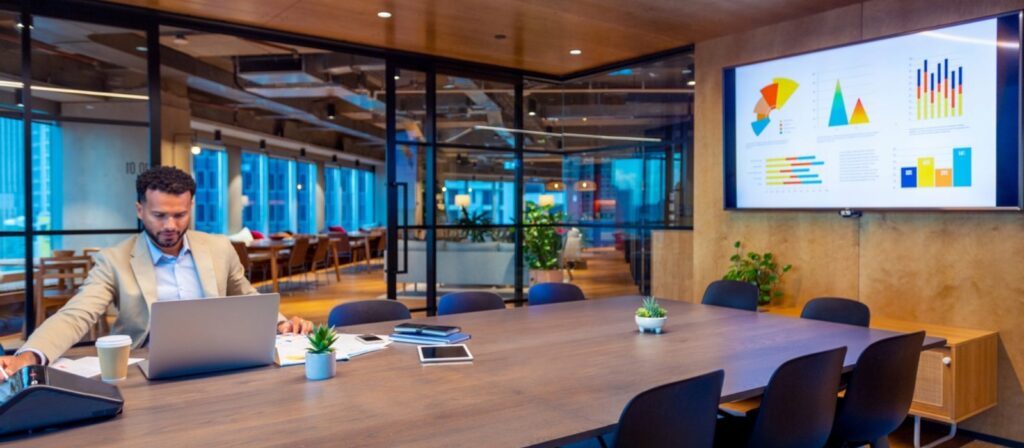Workplace distancing is the new normal for employees in the COVID-19 era and Room Booking software can help.
While Room Booking software can absolutely assist with workplace distancing, it only works as well as the accompanying office guidelines.
In this article, we’re looking at best practices to ensure you are optimizing Room Booking in the wake of COVID-19.
1. Limit which desks and rooms are bookable in order to maintain safety precautions and COVID-19 protocols
Studies have shown that the COVID-19 virus can survive on surfaces for 4 to 72 hours. If multiple groups can move in and out of the same meeting room without proper precautions, COVID-19 could easily spread between groups.
Limiting the bookable rooms in your facility can reduce cross-contamination, because people will be forced to use alternating meeting rooms. It can also provide more time for enhanced cleaning protocols between bookings, because you can control when each room is booked. This gives facilities teams more control and visibility into how and when rooms are being used throughout the workplace.
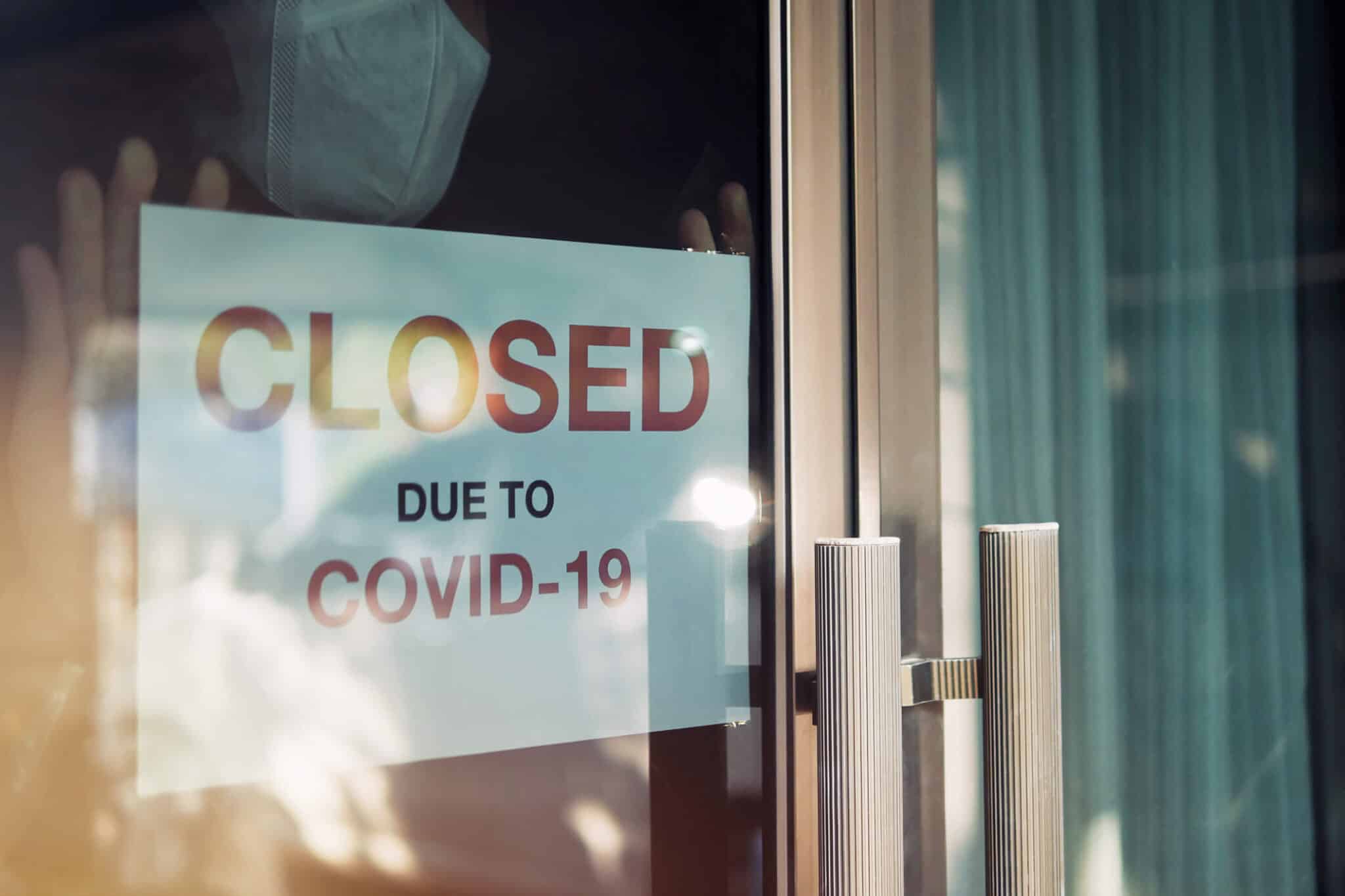
2. Make pre-booking mandatory
Making pre-booking rooms a mandatory process is a good practice even outside of COVID-19 precautions, as it reduces time wastage in the office while an employee looks for a room. Once employees understand the need to book in advance, they will quickly adapt if you have an intuitive software.
This also provides facilities management with advanced notice as to which employees will be using which spaces, and can predict and plan around employee distribution.
Enhanced cleaning protocols are necessary during COVID-19, and pre-booking rooms provides employees visibility into when the rooms will be cleaned, so that enhanced cleaning can take place without disruption during the workday.
The virus is airborne, so it’s good practice to have time for ventilation between people using the same space.
3. Enforce and log enhanced cleaning protocols
Document any changes to existing cleaning protocols, and also ensure that all staff is aware of any new cleaning protocols. Make sure that employees are aware of any changes to their workday. Will they need to sign in? Physically distance? The more clarity and guidance you can provide, the easier it will be to convince employees to adhere to the new rules.
Visibility around enhanced cleaning protocols will provide employees with a sense of security. If employees are feeling nervous about coming back to the office, official logs showing midday cleanings can help alleviate nervousness. If someone in your office tests positive for COVID-19, it’ll be a relief to all employees if they know the space has been thoroughly cleaned.
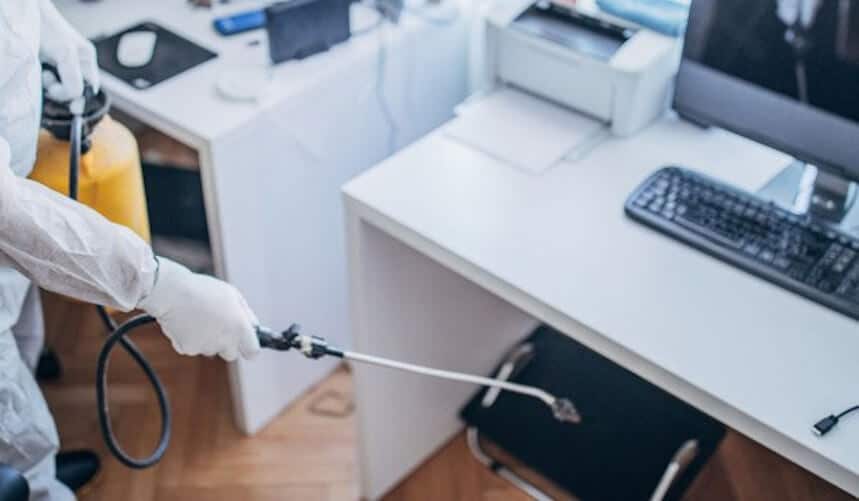
4. Provide PPE supplies and guidelines
While ensuring workplace distancing is a good start, it is important to ensure staff has access to PPE. All employees should understand the guidelines around PPE use, particularly if they are required to wear masks and/or other protective equipment in the workplace or in meeting rooms.
Most common COVID-19 PPE includes:
- Hand sanitizer in all common workspaces.
- Disinfectant wipes
- Facemasks
Check the latest coronavirus advisories from your government and local health authority as you plan your organization’s approach to social distancing in the workplace. Depending on your region, additional advisories and updated guidelines may be in place. Here are some reference links to each country’s COVID-19 Workplace Guidelines:
- USA: Interim COVID-19 Guidance for Businesses and Employers
- Canada: Preventing COVID-19 in the workplace
- UK: Guidance for employers and businesses on coronavirus (COVID-19)
- Australia: COVID-19 Information for workplaces
5. Establish room use and limits
By setting guidelines for specific rooms, you can control the workflow and prevent unnecessary usage. For example, there’s no need for a two-person meeting to occur in a ten-person boardroom, especially if there is a clean two-person meeting space available.
What will each particular room be used for? For example, if one room is set up specifically for video conferencing, save it specifically for the individuals or departments that need to video conference.
Which departments or individuals will be able to book specific rooms? Assign access passes as part of PPE (if you haven’t already assigned access passes) to set aside specific rooms for specific departments or individuals. This can prevent cross-contamination between departments.
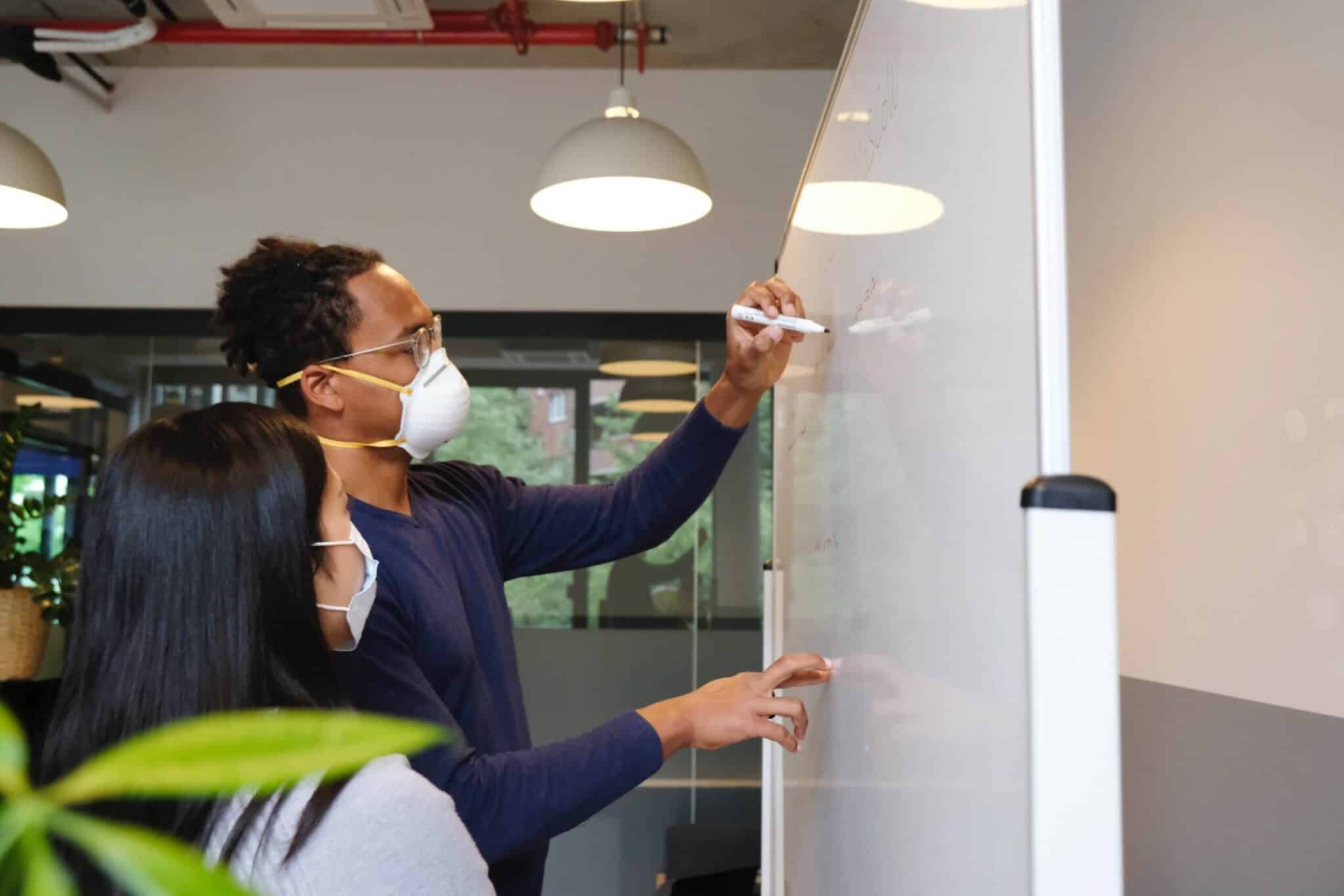
6. Change room layouts
Use an IWMS and Space Management principles to optimize rooms for physical distancing protocols. Careful planning can eliminate the need for employees to congregate in small spaces.
However you use Room Booking, ensure that you communicate your policies well. Employees will feel more comfortable in their workspace if they know what is expected of them, and if they understand what their employer is doing to ensure their safety.
7. Enable Distancing Planner
Enable Distancing Planner to assist with physical distancing guidelines. This feature uses AI technology to automatically create distanced seating configurations that optimize your reduced workplace capacity.
Combine Distancing Planner with Room Booking to determine maximum occupancy of shared spaces in order to maintain physical distancing protocols. Knowing how many people you can safely manage in shared spaces may help guide how you book your rooms. This tool also provides real-time visibility of an organization’s safe seating capacity and allows teams to visualize the seating capacity trade-offs at a range of distancing intervals.
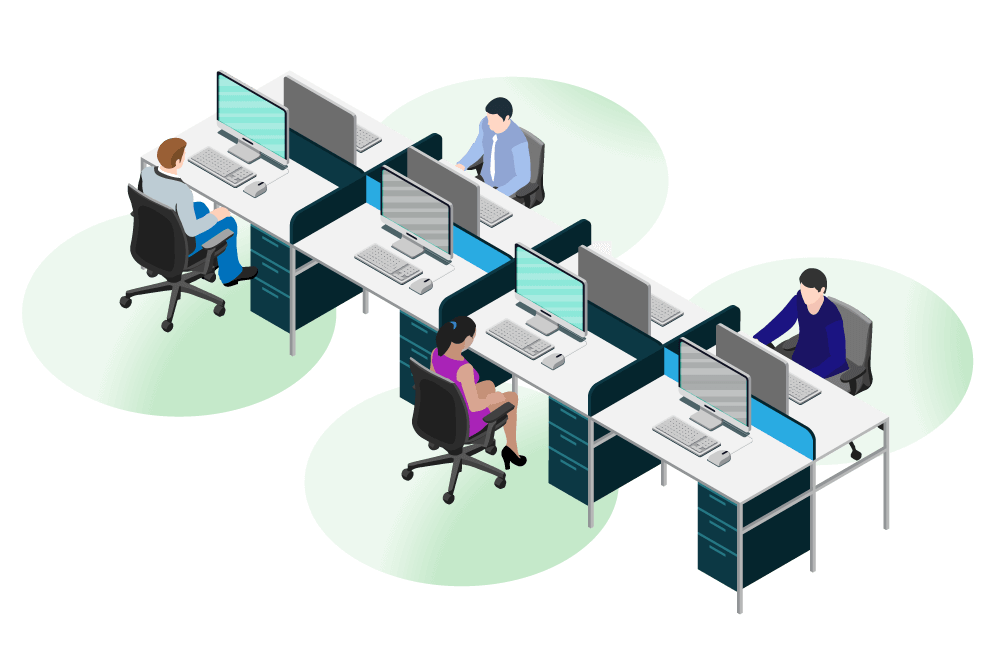
8. Enable Safeguard
Incorporate Safeguard for customizable forms that are fully integrated with your company’s workplace management platform.
Prevent employees from checking into their room bookings until they pass their Safeguard check, which you can customize based on your workspace’s needs.
Include specific questions relevant to your workspace:
- “By clicking Confirm, I ______ agree that I will use the ____ room for _ hours. By signing this, I confirm that I will use my booked desk”
This way you can keep the room locked for that time, whether it is used or not. Employees will learn to book ahead rather than clamoring for rooms and watching the floor plan for openings.
How are you using Room Booking? Comment below or send us a tweet to let us know.
Photos: Damian Zaleski, iStock, airfocus, OSS

